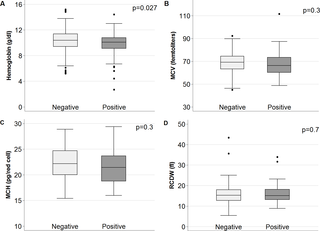PLOS Neglected Tropical Diseases ( IF 3.8 ) Pub Date : 2017-11-06 , DOI: 10.1371/journal.pntd.0006017 Khadija Said , Jerry Hella , Stefanie Knopp , Tatu Nassoro , Neema Shija , Fatma Aziz , Francis Mhimbira , Christian Schindler , Upendo Mwingira , Anna M. Mandalakas , Karim Manji , Marcel Tanner , Jürg Utzinger , Lukas Fenner

|
Background
Despite the high prevalence of helminth infections among preschool-aged children, control programs in sub-Saharan countries primarily focus on school-aged populations. We assessed the prevalence of helminth infections and determined risk factors for infection among preschool-aged children in the urban setting of Dar es Salaam, Tanzania.
Methodology
Starting in October 2015, we conducted a 12-month prospective study among tuberculosis (TB)-exposed children under the age of 5 years and unexposed controls from neighboring households. At the time of recruitment, we collected medical histories, assessed development and cognitive functions, and performed medical examinations. We performed full blood cell counts and screened for HIV and malaria. Point-of-care circulating cathodic antigen (POC-CCA), urine filtration, Kato-Katz, FLOTAC, and Baermann tests were employed to detect helminth infections in urine and stool. Helminth infections were stratified for Schistosoma and other helminths to identify risk factors, using logistic regression.
Principal findings
We included 310 children with a median age of 26 months (inter quartile range 17–42 month) in the study. Among these, 189 were TB-exposed and 121 TB-unexposed. Two thirds of the children were anemic (hemoglobin level <11 g/dl) and the HIV prevalence was 1.3%. Schistosoma spp. was the predominant helminth species (16.0%; 95% confidence interval [CI] 12.1–20.3%). Other helminth infections were less frequent (9.0%, 95% CI 6.3–12.8%). Poor hygiene, use of household water sources, and TB-exposure were not associated with helminth infection. Development and cognitive scores did not significantly differ in helminth-infected and uninfected peers, but hemoglobin levels were significantly lower in helminth-infected children (10.1 g/dlvs. 10.4 g/dl, p = 0.027).
Conclusions/significance
In Dar es Salaam, a city with more than 4 million people, the prevalence of Schistosoma spp. infection among preschool-aged children was surprisingly high. Setting-specific interventions that target preschool-aged children and urban settlements should be considered to reduce the transmission of Schistosoma and other helminth infections and to improve children’s health.
中文翻译:

坦桑尼亚城市学龄前儿童的血吸虫,其他蠕虫感染及相关危险因素
背景
尽管学龄前儿童中蠕虫感染的患病率很高,但撒哈拉以南国家的控制计划主要针对学龄人口。我们评估了坦桑尼亚达累斯萨拉姆市区内学龄前儿童中蠕虫感染的患病率,并确定了感染的危险因素。
方法
从2015年10月开始,我们对暴露于5岁以下结核病(TB)的儿童和未暴露于邻家对照的儿童进行了为期12个月的前瞻性研究。在招募时,我们收集了病史,评估了发育和认知功能,并进行了体检。我们进行了全血细胞计数并筛查了HIV和疟疾。现场即时循环阴极抗原(POC-CCA),尿液过滤,Kato-Katz,FLOTAC和Baermann检测用于检测尿液和粪便中的蠕虫感染。使用logistic回归对血吸虫和其他蠕虫的蠕虫感染进行分层,以识别危险因素。
主要发现
在研究中,我们纳入了310名中位年龄为26个月(四分位间距为17-42个月)的儿童。其中,有189例患有结核病,有121例未患结核病。三分之二的儿童贫血(血红蛋白水平<11 g / dl),艾滋病毒感染率为1.3%。血吸虫属。是主要的蠕虫种类(16.0%; 95%置信区间[CI] 12.1–20.3%)。其他蠕虫感染的频率较低(9.0%,95%CI 6.3–12.8%)。卫生条件差,家用水的使用以及结核病的暴露与蠕虫感染无关。在感染蠕虫的同伴和未感染同伴中,发育和认知得分没有显着差异,但是在感染蠕虫的儿童中,血红蛋白水平显着降低(10.1 g / dl对10.4 g / dl,p = 0.027)。
结论/意义
在人口超过400万的达累斯萨拉姆,血吸虫的流行。学龄前儿童的感染率高得惊人。应考虑针对学龄前儿童和城市居住区的针对性干预措施,以减少血吸虫和其他蠕虫感染的传播,并改善儿童的健康。



























 京公网安备 11010802027423号
京公网安备 11010802027423号